Flooring: Top Floors, Best Choices - Page 4
Laminates: ($2 to $7 per sq. foot) Laminates have the appearance of hardwood, tile, or stone floors but have superior stain and fade resistance. You can choose from natural colors, dark wood grains, as well as warm or cool color tones to complement any room decor. Many hardwood plank designs are offered, including rare, exotic wood species. Stone and tile patterns can give the elegant look of tile, but without the concerns about grout cleaning or cracking tile. Laminate floors are never secured directly to the subfloor; they are floated. This allows laminate flooring to be used over a wide variety of subfloors, including wooden subfloors, existing floors, and even concrete slabs. Resources: Pergo; Wilsonart; Mannington.
Wood: ($4 to $12 per sq. foot) A hardwood floor can add warmth and character to a home that other materials cannot. Thanks to new construction techniques and technologically advanced polyurethane finishes, wood floors can now be installed throughout the home and over a wide variety of subfloors. Today, homeowners looking to use wood floors have the option of purchasing four different types of wood flooring: solid wood, engineered, longstrip plank, and parquet squares. Once installed, it is extremely difficult to tell the difference between a solid wood floor and the other wood floors. Both the engineered and the longstrip have thin layers of wood that are glued together. Wood needs to be kept away from standing water and has the probability of expanding and shrinking in different humidity and temperatures. Those with cement slabs should always have their floors moisture-tested first to ensure they are compatible with wood flooring. Those with allergies may want to consider a water-based coating. Resources: Bruce Hardwood Flooring; Armstrong.
Bamboo: ($6 per sq. foot and up) Made from grasses that rejuvenate themselves every four years, bamboo is enticing homeowners who want to care for the environment. Bamboo looks like narrow strips of hardwood flooring and can be stained to complement most interiors. It is maintained much like hardwood flooring and can be refinished.
Ceramic and Porcelain Tile: ($1 to $6 per sq. foot) Ceramic tile has been around for centuries, and with today's technology manufacturers have created new design and application possibilities that were not available a decade ago. The myriad of colors, sizes, shapes, textures, and glazes make designing a playground for many homeowners. Made of clay, ceramic tile is durable and easy to clean with a damp mop or basic household cleaner. It is extremely scratch- and water-resistant. Large tiles (18 inches and larger) are more difficult to install and are prone to cracking if not installed properly. Resources: Daltile; American Olean. For those looking for an elegant, high-end option, consider Porcelanosa.
Natural Stone: ($3 per sq. foot and upwards) Stone is usually cut into tiles from quarried blocks of granite, marble, limestone, slate, or other rock. Although floors made from this material are expensive and hard on the feet, they provide an exceptionally beautiful flooring material that has a timeless, elegant quality. Some types of stone are very porous, absorb stains easily, and some of these stains can be difficult to remove. Others are extremely low maintenance and hard wearing. These stone materials do require a strong subfloor underneath, and polished stone can be slippery when wet. Options to this include honed stone, which has been ground flat but not polished, or textured tiles created by sandblasting or heating with a torch. Resources: Walker Zanger; Arizona Tile; International Wholesale Tile; Ann Sacks.
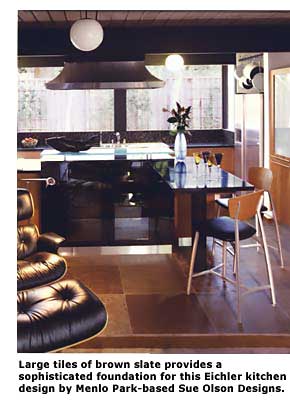
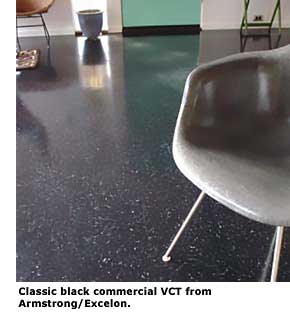
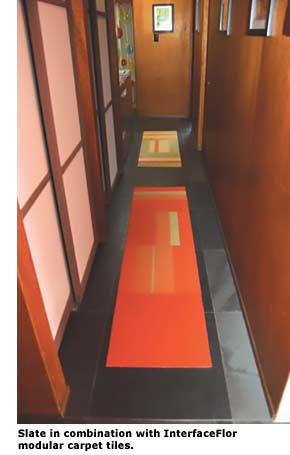
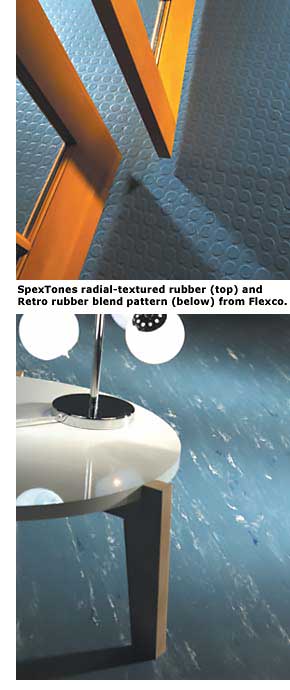
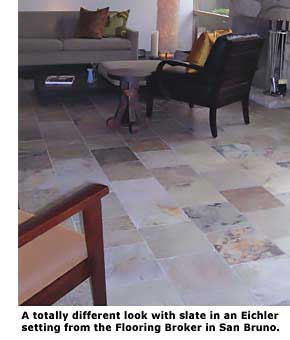
- « first
- ‹ previous
- 1
- 2
- 3
- 4




